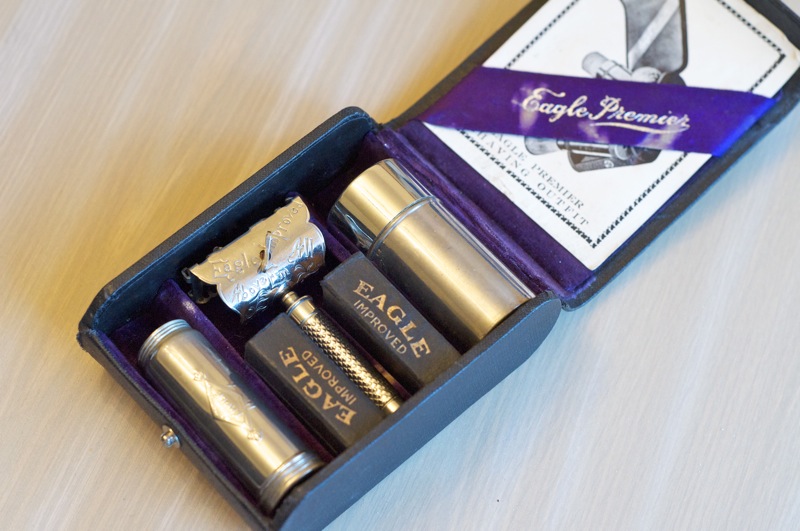We're taking it old school this month and going back to the very beginning of the safety razor. While the idea of a razor with a guard goes back further, the Kampfe brothers' patent issued on June 15, 1880 is the earliest recorded use of the term "safety razor" that I've seen.

What exactly is a lather catcher? It's a single-edged safety razor where the blade is held over a cupped recess originally designed to literally catch the lather as you shaved. Here's a passage from that 1880 patent:
As time progressed, the "catcher" portion of the razor became more and more of a stylized element until we reached the 1914-style "Little Lather Catcher" where it's hardly more than a vestigial shadow of its former self -- a pogonotomical appendix, if you will -- before it ultimately disappeared entirely.
So, if you've got lather catchers we want to see 'em. If you've got questions ask away, and let's see if we can find answers for them. Anything and everything about lather catchers of any variety is fair game.
I'll start by sharing a couple of photos of my personal favorite of all my SEs: my Star Bar lather catcher. For all intents and purposes it's identical to the Gem Junior Bar, but was made under the Star brand. I would guess that it's from about 1910-1911, and it really is one amazing little shaver.


What exactly is a lather catcher? It's a single-edged safety razor where the blade is held over a cupped recess originally designed to literally catch the lather as you shaved. Here's a passage from that 1880 patent:
The sharp edge of the razor rests against the grated or toothed edge of the front plate, and as the hair and soap are removed in operation of shaving such refuse matter will be forced through the opening G in the bottom plate, and be retained within the hollow holder, thereby permitting of the use of the device without danger of soiling the fingers of the user.
As time progressed, the "catcher" portion of the razor became more and more of a stylized element until we reached the 1914-style "Little Lather Catcher" where it's hardly more than a vestigial shadow of its former self -- a pogonotomical appendix, if you will -- before it ultimately disappeared entirely.
So, if you've got lather catchers we want to see 'em. If you've got questions ask away, and let's see if we can find answers for them. Anything and everything about lather catchers of any variety is fair game.
I'll start by sharing a couple of photos of my personal favorite of all my SEs: my Star Bar lather catcher. For all intents and purposes it's identical to the Gem Junior Bar, but was made under the Star brand. I would guess that it's from about 1910-1911, and it really is one amazing little shaver.












































